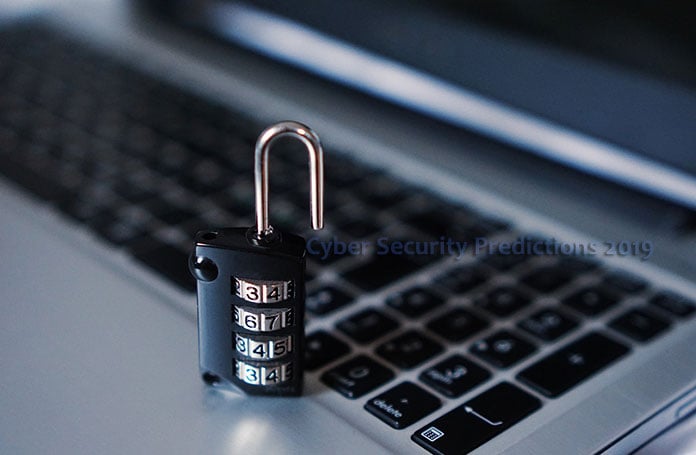Cybersecurity industry in 2019: The turn of the year, traditionally, is a time to reflect on the 12 months just past, and all the triumphs and failures that they encompass. It is also a time to gauge what new developments the coming year will bring with it. And, while unexpected surprises will always be in the offing, the unparalleled access to data and information that we have today has made it much easier to identify which developments will evolve into major trends, and which ones will fizzle out.
This stock-taking is of paramount importance in mission-critical domains such as cybersecurity. With our lives beginning to play out just as much in the digital realm as they do in the physical one, the need for robust cybersecurity to protect the digital manifestations of individuals and organisations against a myriad of known and unknown threats has never been higher.
Achieving this objective requires cybersecurity experts to track and analyse, in great depth, how the global threat landscape has evolved in the previous year, as well as its probable future iterations. They must also factor in the rapid advancements in technology and their influence on the business ecosystem. Only by adopting a future-ready attitude can we expect to counter the challenge posed by modern-day cybercriminals and threat actors.
With all this in mind, here are some of the key trends that will shape the global cybersecurity in the coming year – and well beyond:
Technological convergence will lead to a cyber-physical destruction of critical infrastructure
We live in the age of unparalleled interconnectivity. Technologies are converging and evolving at a pace hitherto unseen, blurring the boundaries between physical and real worlds. This is nothing new; the convergence between Operational Technology (OT) and Informational Technology (IT) has been going on for quite some time now.
But with great interconnectivity comes greater responsibility, and so it is here. The growing interdependence between OT and IT has substantially increased the attack surface available to threat actors – so much so that a successful cyber-attack can cause severe ramifications in the physical world. The 2017 WannaCry Ransomware attack is a particular case in point.
The biggest ransomware attack that the world had seen till date infected computer systems in around 150 countries and caused service disruption across multiple industries. The UK's National Health Service (NHS) was amongst the worse-hit by this disruption.
With key systems locked out by the ransomware, healthcare service providers across England and Scotland were forced to cancel appointments, restricting themselves only to emergency medical cases. Considering the pace at which technology is being integrated to power physical operations, another such attack – if successful – could end up completely gridlocking critical services such as energy, healthcare, banking and financial services, and transportation on a massive scale.
BFSI players to turn to network segmentation for securing critical applications
Given how much data and financial capital it handles on a daily basis, the global banking, financial services, and insurance (BFSI) sector is a perennial target for cybercriminals. According to a study by Ponemon Institute, the annualised cost of finance-related cybercrime crossed $18 million in 2017 – the highest across various industries. As the recent fraud at Pune-based Cosmos Bank showed, BFSI players can no longer consider cybersecurity to be a luxury.
In 2019, we will witness leading players in the global BFSI industry taking stronger measures – both in terms of technological implementation and policy/regulation – to protect their critical infrastructure. Network segmentation, which is essentially the process of splitting larger networks into self-contained sub-networks, is also expected to become more widely adopted to secure critical applications and resources.
Healthcare environments will drive large-scale changes in network architecture


Innovation in medical technology is keeping pace with advances in medical science, and is democratising healthcare by providing seamless access to quality medical and healthcare services to a much wider audience than previously possible. However, the integration of new-age medical technology into existing healthcare service delivery models also introduces a significant risk of cyber threat. Protecting data, patients, and service providers from this risk will require completely reimagining healthcare processes from a cybersecurity standpoint.
To begin with, we might see a re-classification of connected medical devices as per their level of criticality and threat vulnerability. Other measures, such as real-time protocol parsing and packet inspection, might also be introduced to increase the visibility and security robustness of healthcare IT networks. This will eventually lead to significant changes in the network architectures, as adopted by healthcare service providers.
Continuous Diagnostics and Mitigation (CDM) to increasingly become the norm
Given how sophisticated cyber-attacks have become today, users – both enterprise and individual – have realised the need to gain constant visibility into their connected networks. Apart from identifying what and who is on the network, there is a momentous shift towards understanding exactly what happens, as well as how data flows and is protected within it. As a result, expect Continuous Diagnostics and Mitigation (CDM) to achieve greater maturity and find adoption across mission-critical public and private sector organisations for real-time threat detection, prioritisation, and mitigation.
Cyber-attacks get more personalised and creative to target public data
The fuel that powers modern-day organisations and processes, data has become just as valuable as gold – if not more. Cybercriminals are aware of its value as well and have been targeting sensitive personal and enterprise information. This trend is likely to escalate, with threat actors leveraging more creative vectors to personalise attacks and compromise data and information that could potentially put millions of individuals at risk. Data-intensive sectors such as healthcare are particularly susceptible to such threats.
In 2019, cybercriminals will continue to deploy advanced network and spear phishing attacks targeted at healthcare companies. Malicious insider activity and sabotage is also expected to rise, as is unintentional human error. All of this will continue to jeopardise the security and safety of the patients and their electronic health records.
Man-machine collaborations to drive the future of cybersecurity
While the growing digitisation is driving the demand for cybersecurity solutions, there is a significant dearth of skilled cybersecurity experts in the jobs market. According to a recent report from IBM, India needs around 3 million cybersecurity professionals to cater to its varied cybersecurity needs, but currently has less than 100,000.
This gap in the supply and demand of talent is a challenge that exists on a global level, which is why leading cybersecurity firms have turned to new-age tools such as automation and machine learning to complement their human skillsets. Not only does such a man-machine integration take time-consuming, high-volume, and repetitive tasks off the shoulders of human teams, but also enables human experts to undertake more strategic and value-driven initiatives.
2019 will see a stronger push towards such intelligence automation (IA) through increased collaborations between humanity and technology. This will address the fast-growing skills gap and will also help in devising and implementing more robust cybersecurity solutions and practices.
An Old Russian proverb says “dwell on the past and lose an eye. Forget the past, and lose both.” In today's day and age, when technological transformation and rapid progress have become bywords for most, it is important for us to revise this adage. Looking back remains important, but looking ahead to the future to identify what next has emerged as a non-negotiable requirement – especially for those of us in the cybersecurity domain.











